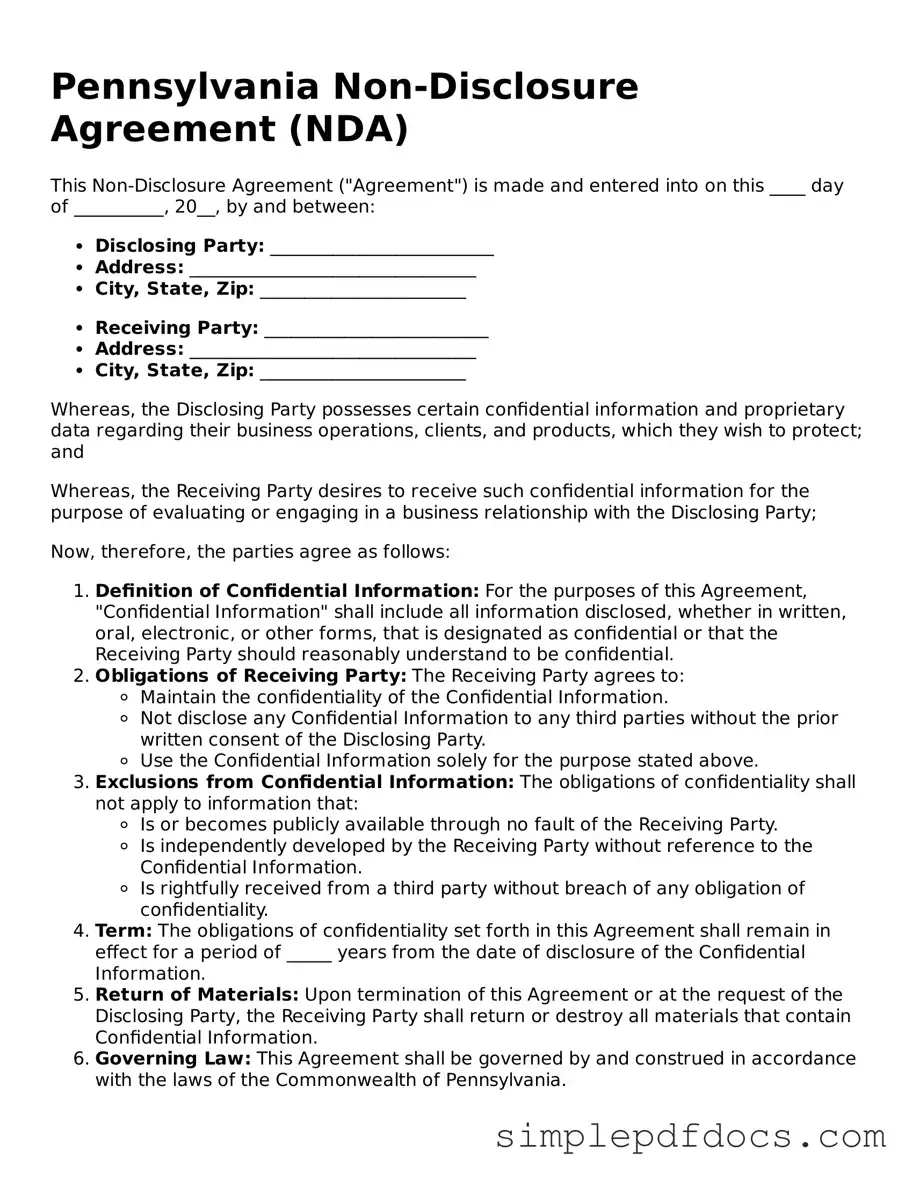In the realm of business and personal relationships, confidentiality often plays a crucial role in fostering trust and protecting sensitive information. The Pennsylvania Non-disclosure Agreement (NDA) form serves as a vital tool for individuals and organizations looking to safeguard proprietary information from unauthorized disclosure. This legally binding document outlines the obligations of the parties involved, detailing what constitutes confidential information and the duration of the confidentiality obligations. It typically includes provisions on how the information can be used, the consequences of breach, and the legal remedies available. By establishing clear guidelines, the NDA helps prevent potential disputes and misunderstandings, ensuring that all parties are on the same page regarding the handling of sensitive data. Whether you are a business owner sharing trade secrets with a potential partner or an employee accessing confidential company information, understanding the nuances of the Pennsylvania NDA form is essential for maintaining privacy and protecting your interests.
